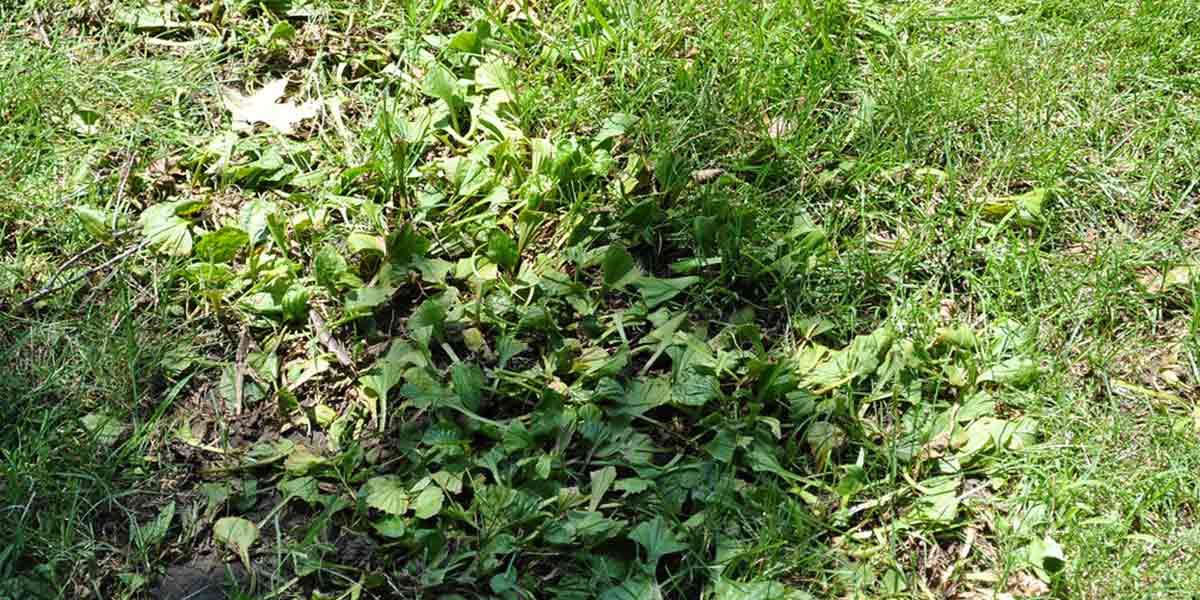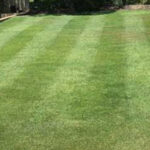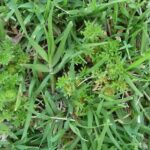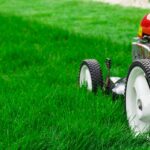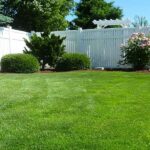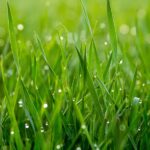Now is the time to start the yearly battle against the Broadleaf weeds that appear in your lawn during Winter and Spring. (Look at our weed identification page to see the weeds this term includes.)
Timing is critical to rid your lawn of this year’s crop as effectively as possible, in turn reducing the seedbed for next year’s crop. Once a weed flowers (for example, the daisy-like flower on Capeweed), it is getting a good foothold for not just the current year but for years to come.
SPRAYING TOO EARLY
An application of broadleaf herbicide in May/June will give you a lovely clean lawn surface throughout Winter, but may run out before the end of the weed season in late Spring. This is fine if your budget allows two sprays annually. I prefer to spray from July onwards, so only one application is necessary. While your lawn will have some weeds during early Winter, a single application can only be good for your budget and the environment.
It is important to use a product that has initial knockdown quality as well as a residual property to prevent yet-to-germinate weeds. These products are generally not available to the public. You can purchase Bromoxynil-based products at your local Hardware or garden centre but, in my experience, these products are initially effective but have a relatively short control period. This means repeated applications during a broadleaf weed season that can be up to 6 months long, effectively costing you just as much, if not more in the long term. So choose an operator familiar with the need to apply a product with the two qualities – an effective knockdown and a generous residual control period.
SPRAYING TOO LATE
Waiting until September or October to clear out weeds can be a problem. Weeds such as Capeweed, Clover, Cudweed and Flatweed can spread out not just as individual plants but as a ‘team’ to really choke out a lawn. Removing these late in the season can leave sparse, pitted areas that require work such as top dressing and repeated fertiliser applications through Spring and early Summer to encourage lawn growth back into these areas.
Prickly weeds such as the dreaded Bindii/Jo-Jo will set a nasty flower (prickle) in mid-Winter that should as a general rule be sprayed out before mid-Spring. Do not let it seed at all. Yes, you can kill it anytime but spraying out Bindii/Jo-Jo in October/November will just release the prickle from the dying plant, leaving it to roll/blow around your lawn until it gets picked up on your feet, your kids’ feet, the pets or finally the lawnmower.
FREQUENTLY ASKED QUESTIONS
What if it rains after you’ve sprayed my lawn?
Spraying leaf-absorbed products during rain and wind can be tricky. In my experience the wind is a bigger foe than the rain. As far as rain goes, there are extremely effective surfactant/sticking agents around to bind products to weed leaves and dry the product quickly when rain is imminent. I find products that are properly blended with the correct sticking agents are effective even when it rains within an hour after application of the herbicide. Wind however is difficult to counter. You can use shrouded booms but these are a little risky as it is hard to keep an eye on the performance of nozzles (eg streaking, poorly functioning tips). Generally I just don’t take the truck out. I prefer to see my golf ball hit the trees than my herbicide.
How long do I need to stay off the lawn after you’ve sprayed for broadleaf weeds? Do I need to keep pets off the lawn? Are the herbicides safe?
Herbicides now undergo stringent pre-release tests to ensure they are safe for people and the environment, and all licensed operators are fully versed on herbicide schedules, their proper handling, application and storage.
My choice of broadleaf herbicide is a Schedule 5 (least offensive), which means it is only slightly toxic. It will not affect pets, and you can walk on lawns as soon as the product has dried. Recently Schedule 5 pre-emergent Wintergrass and Crabgrass products have also become available.
Herbicide application is based around the hit and stick method. This means the herbicide is applied in a mist, and sticks to weed leaves so it can be absorbed by them. This allows for maximum take-up of the herbicide and prevents run-off and leaching into the water table.
SUMMING UP
Weed control is all about using the right product at the correct rate at the right time, in weather conditions favourable for the performance of the product. It is also about persistence.
When I have been spraying a property for 4-5 consecutive years, the weed seedbed is so heavily reduced that spraying is purely a maintenance issue; a bit like getting the car serviced. Without large weeds taking hold each year, your lawn is free to establish fully throughout the year.
Of course, some garden conditions can favour weed development. For example, shaded, worn or waterlogged areas are prime sites for strong broadleaf weed development, and these need to be managed in conjunction with your spraying programme.

